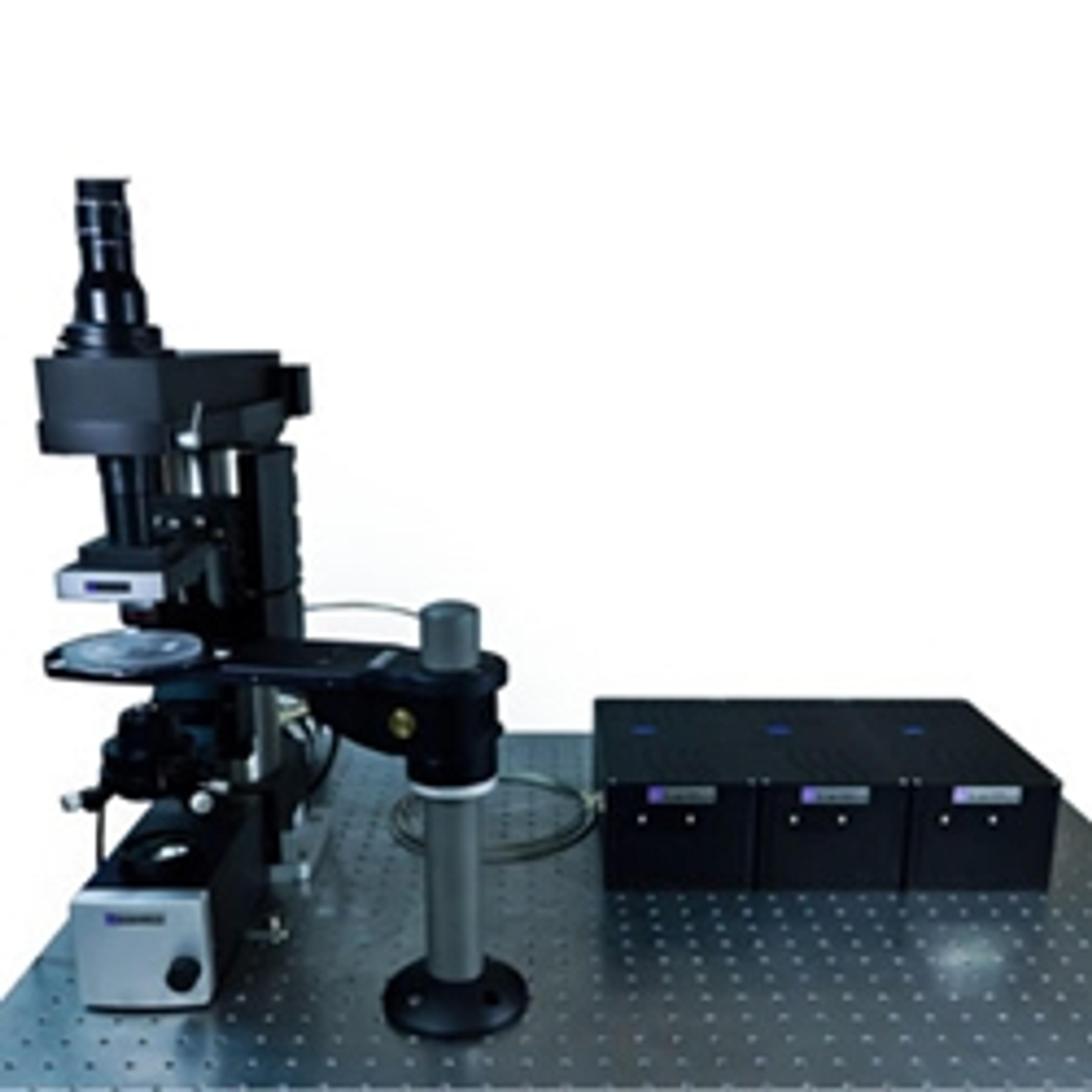Scientifica Introduces LASU, the 'Laser Applied Stimulation & Uncaging' System, Perfect for Optogenetic and Uncaging Studies
21 Nov 2014
Scientifica are excited to announce the launch of LASU, the brand-new solution for optogenetic stimulation and uncaging studies. The Laser Applied Stimulation and Uncaging system is specifically designed to enhance the combination of electrophysiology, optogenetics and uncaging, for advanced studies of neuronal processes.
LASU provides pinpoint positioning of laser beams for fast, accurate and repeatable experimental protocols. The custom made software allows you to visualize your sample in real-time and change essential experimental parameters in its user-friendly interface. Galvanometric scan mirrors give flexible control of the lasers enabling directional programming in a “point and click” manner, a predefined pattern (covering the whole field of view), or a random point selection order.
The modular assembly, based on the award-winning design of the Multiphoton Imaging System, piggybacks onto the Scientifica SliceScope upright microscope. This makes the setup both streamlined and upgradeable (as new techniques lead to further developments).
LASU uses high-speed laser diode technology combined with triggering electronics and coupling optics all in one compact box. This technology means power can be instantly delivered without the need to keep the laser on permanently and with no physical shutter, minimizing vibrations.
Options are available to choose lasers for uncaging or photo-activation or a combination of both. The laser can be delivered through fiber coupling or freespace optics, whichever solution works best for the research technique being used. A variety of wavelengths can be selected depending on your requirements.
Within the software you can control the speed and timing of all stimulation protocols with the ability to change laser dwell time, point-to-point timings, intensity control, exposure time, gain and image optimization.
Mark Johnson, Managing Director/CEO, said:
“Optogenetics and uncaging are becoming increasingly popular tools for neuroscience research.”
“The LASU system has been designed with the input of researchers developing these techniques to make it as effective as possible. As a result, LASU is a well-made, cost-effective and future-proof product for those wishing to use optogenetics and uncaging in their laboratories.”
Dr Rodrigo Aviles, Electro-Mechanical Development Manager and lead designer/engineer on LASU, said:
“Applying diverse colors of light into different types of neurons loaded with light sensitive compounds will enable sketching out the brain circuitry for a better understanding of its activity and connectivity.
“LASU is a user-friendly system providing the researcher with the necessary resources to perform in vitro optogenetics and uncaging. The modular design of the system will enable researchers to expand functionality as their research progresses and these techniques develop.”
Dr Simon Butt, Associate Professor of Neuroscience at the university of Oxford, said:
“We are trying to understand the physiological mechanisms underpinning emergent circuits of the mammalian cerebral cortex. Laser scanning photostimulation (LSPS) enables rapid assessment of synaptic connectivity across a region of interest. We map connections onto recorded neurons across single and adjacent cortical columns in acute in vitro slice preparations of the mouse whisker barrel cortex. For LSPS to provide an effective measure of synaptic connectivity it is necessary to have good spatial and temporal resolution in terms of photo-activation. LASU achieves this with ease.”
The LASU Uncaging System was displayed at the Society for Neuroscience Annual Meeting 2014 (15th – 19th November, Washington, DC).

